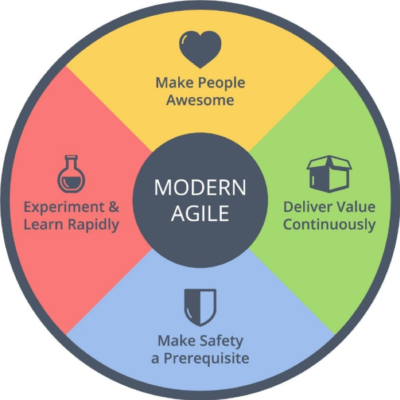Increasingly often these days we get greeted with the phrase “May you live in ‘interesting’ times”. Then we may pause a minute to think whether that was meant as a constructive positive wish – or whether there was something deeper meant by it. ‘Interesting’ sometimes seems more to mean ‘turbulent times’ rather than ‘fascinating’. Either way it is becoming a feature of life these days – and Brexit – whatever your views on that – certainly raises the level of uncertainty.
Business is at its heart about prospering from risk. There will always be unavoidable risks – and the winners are those who most effectively manage and mitigate them, seeing them as a competitive opportunity rather than just as a threat. The question of course then is how best to do this, especially during turbulent times.
For me the answer has two key components:
Firstly, manage the risks that you do know. This is the relatively easy bit – we have all the traditional risk management tools including FMEA (Failure Modes Effects Analysis), and established governance approaches (including maintaining an appropriate Risk Register). If you’re less familiar with these then of course come and speak with us – they are a standard part of Managing Change and are of course in our Lean Six Sigma Improvement and Transformation set.
But the bigger issue is managing the risks that you don’t know – and can’t know. Here’s where we’re getting into ‘VUCA’ (Volatile, Uncertain, Complex, Ambiguous) times. A key to managing this type of risk is Business Agility. Gone are the days when we could afford to take considerable time to plan, consider every option, select what seemed best, and then drive along that – steering our way from time to time – essentially knowing that at the speed at which we were driving we could see the bends and the crossroads sufficiently well in advance to make the call and steer the path ahead. Now it’s more like we’re travelling so fast that we can’t see the road ahead, and in any case the landscape is changing faster than we’re driving (and unpredictably so)!
The metaphor shows us that two things will mostly often happen:

We could for the most part stay on the road and make turns without full knowledge of where they could take us but being guided by a general sense of direction. We’d probably soon enough then find out whether we were on a sensible path – if so continue, and if not learn and change direction as quickly as possible. The key thing is being not to go too far down any one path before confirming our position and direction. Arguably this wouldn’t be the ‘perfect’ route – but in most cases it will work provided we keep a clear sense of direction during turbulent times (here read ‘constancy of purpose’ for our business situation). A case of not letting ‘perfect’ get in the way of ‘good’ or indeed ‘better’. Here we’re being ‘agile’ – taking small ‘bites’ at the journey, rather than one single long jump. This is analogous to avoiding large batches in Lean Manufacturing but rather shooting for the smallest practical ones – ideally single piece flow – and we know this works well even if it seemed counterintuitive the first time that we came across it.

We could go off the road. Yes, we could fail. But provided the accidents are small and we can recover from them – then the damage is small, we can continue our journey and learn from our experience not to make the same driving error again. This concept in Agile is ‘fail fast and learn’. With sufficiently small steps an individual failure is rarely catastrophic, our ‘hit rate’ (depending which way you look at this – sorry for the pun here) is high (for success) and low for accidents (or failures). Over the journey we may have a few set-backs but we get there for the most part.
In our analogy we cannot rule out the risk of catastrophe, but that’s why we carry insurance. At the individual level serious accidents do occur, but overall the risk of them is acceptable to us – otherwise we’d never go out of our houses. (Not to carry the analogy too far most accidents occur in the home anyway, but let’s not go there). We all use the roads every day, we know they can be dangerous, but that doesn’t stop us going out – we have simply learnt to live with that risk and to manage it. Similarly, with business in the VUCA world; there is no escaping down a simple path and ploughing on no matter what. We have to embrace the risk, learn to ‘plan, do, check and act’ repeatedly in smaller steps at pace, fail fast and learn when we have to, but for the main part succeed in small steps banking progress and realising benefits as we go – not waiting for the gold at the end of the (waterfall) rainbow.
OK – so the trick is to combine Lean (or Lean Six Sigma) and Agility (Agile).
The devil is of course in the detail – but suffice here to say that at Catalyst we have enabled clients to prosper and accelerate the realisation of improvements this way starting through a collaborative development with several of our customers. If you want to know more then please contact us.










